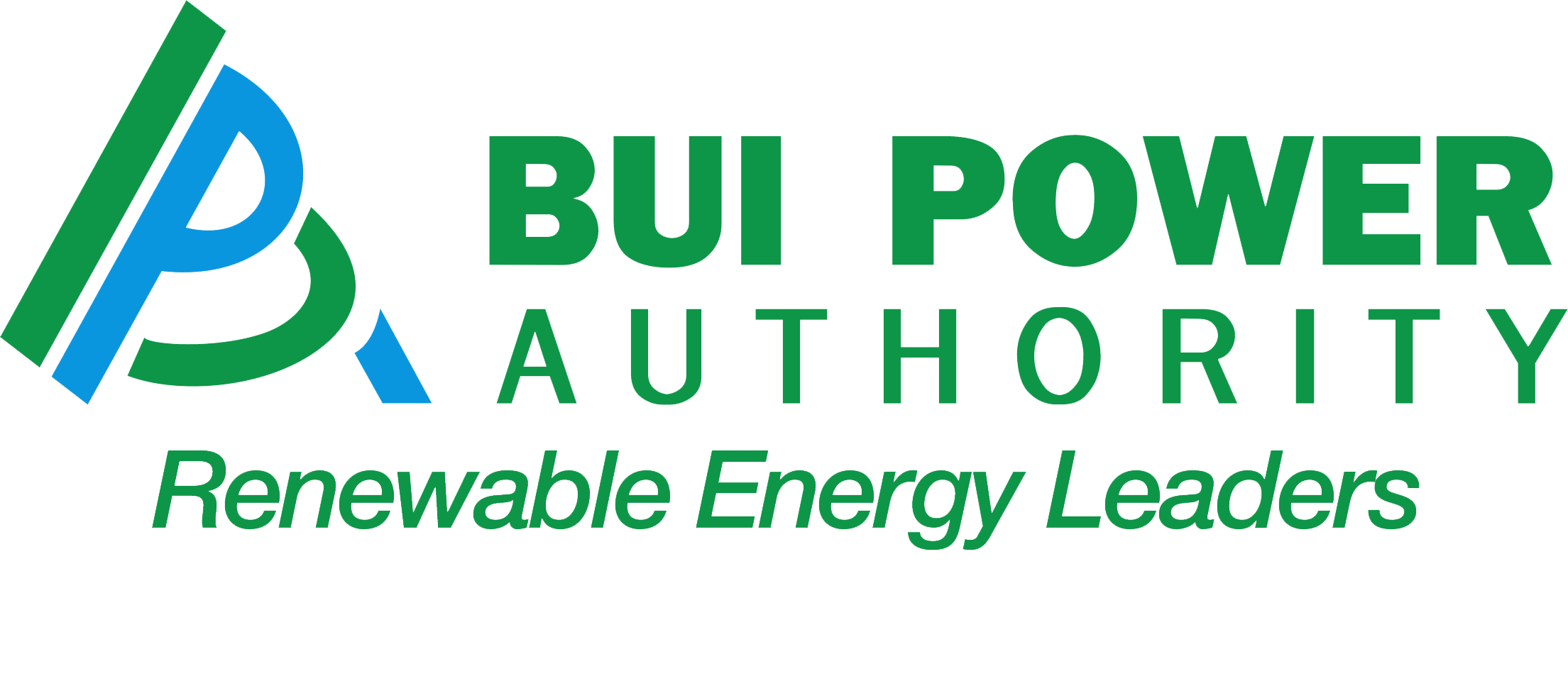Bui Power Authority was mandated to implement the Bui Hydroelectric Project and to ensure that the Contractor, as per requirements, carried out all the works in an environmentally responsible manner, as well as conducted its activities so as to cause the least possible disturbance to the existing natural and man-made features as per the statutory requirements.
Environmental Impacts
On the basis of the Environmental and Social Impact Assessment (ESIA) carried out in October 2006, and the environmental monitoring carried out by BPA, the following key impacts were identified;
- Inundation of landmass of up to 444 km2 at Full Supply Level
- Resettlement of 1,216 people in Project area
- Pollution
– Air Emission
– Dust from vehicular movement
– Noise and Vibration from rock blast - Water quality
- Soil erosion and land degradation
- Construction activities on the river bed, sand excavation and construction of the main dam
- Direct loss and/or disturbance of vegetation
- Socio-economic Issues
– Pressure on social amenities such as clinics, schools, toilets, boreholes
– Impacts from influx of workers
– Social upheavals due to greater economic strength of workers
– Impoundment of the reservoir
Impacts Mitigation Measures being implemented by BPA
- Inundation of landmass of up to 444 km2 at Full Supply Level
- Habitat Offset Creation and Wildlife Protection and Rescue (Bui National Park – BNP)
- New sites (North, South and East) were earmarked but required a Legislative Instrument to gazette them as part of the National Park
- Enhance capacity building to reduce poaching activities
- Strengthen Bui National Park wardens to enforce by-laws on wildlife protection & awareness
- Preparation of Wildlife Rescue operation
- Resettlement of 1,216 people in Project area
- Tree salvaging and greenhouse gas emissions
- Selective harvesting of all tall trees within the inundation were carried out prior to impoundment.
- Loss of Cultural and archeological sites
- BPA engaged the services of the Department of Archaeology and Heritage Studies, University of Ghana, to conduct a ‘Salvage Archaeology’.
- Air Emissions, Noise and Vibration management
- Used low noise machinery
- Ear and nose muffs provided for workers
- Sprinkled/sprayed water (water browser) to suppress the dust
- Compliance with national ambient noise guidelines.
- Drilled and blasted at day time only.
- Water Quality and downstream issues
- Provision of Boreholes for communities.
- Monthly water quality test on Physicochemical parameters to ensure discharges from workstations meet standards
- Awareness creation on water pollution
- Erosion control
- Checked removal of vegetation and also kept green to trap sediments from getting into river.
- Sand excavation in the riverbed is limited to the Dam foundation pit.
- Socio-economic issues; Community Support Measures
- Employment opportunities for people in the catchment area.
- Supported in Community Health Programme and access to primary health care (Bui Medical Centre).
- Periodic community awareness training on STD’s and traffic safety.
- Wildlife awareness programs and limit access routes to Bui National Park.
- Income generation activities; selling of foodstuff to workers at Camp
- Free transport for food vendors and other traders on Site to Techiman market every Thursday
- Provision of boreholes and repairs of broken down ones to augment potable drinking water
- Periodic support to Tain (now Banda) District Health Directorate with vehicles during outreach health campaigns
- Minimization of HIV/AIDS and Communicable diseases
- Regular awareness creation campaigns on STDs, HIV/AIDS
- Monitoring of Camp Followers such as prostitutes, narcotic dealers.
- Stakeholder consultations
- Regular meetings with the affected communities.
- BPA regularly held meetings with the Chiefs, opinion leaders and people of the communities in the Bui Project catchment area.
- BPA delivered letters to the traditional authorities on State Lands (Site for Bui Hydroelectric Power Project – E.I. 70)
- Bono Region (erstwhile) Brong Ahafo Regional Office of the EPA conducted environmental monitoring
- Briefed the District Assemblies whenever there was an opportunity
- Periodic visits by the Executive and Legislative arms of Government. BPA Board visits the Project site regularly.
Non-Inundation of Cote d’ Ivoire
The proposed scheme for the development of a hydroelectric facility at the Bui Gorge has seen some changes over the years. The first notable scheme was proposed by J.S. Zhuk Hydro Projectk of USSR in 1966. In 1976, Snowy Mountain Engineering Corporation (SMEC), of Australia, conducted another study on the feasibility of developing the Bui dam. In 1995, Conye et Bellier (now Tractebel Engineering SA), of France, conducted yet another feasibility study on the Bui Dam and finally updated this report in October 2006.
The development scheme proposed by SMEC in their feasibility report of 1976 was to create a reservoir with a Full Supply Level (FSL) of 198m by building one earth fill main dam and five other saddle dams. This arrangement would have resulted in the flooding of an estimated land area of 2,070ha inside Ivory Coast; specifically areas along the Fanko and Korodio Rivers where some 250ha would have been flooded and some 1,820ha of land along the Black Volta.
The scheme considered by the feasibility study of 1995 and the 2006 update, by Tractebel Engineering SA, included a reduction in the FSL from the initial 198m proposed by SMEC to 183m. It was on this basis that the technical feasibility and economic viability of the Bui Project was established.
A direct effect of the proposed reduction of the FSL from 198m to 183m was to ensure that the extents of reservoir created after the impoundment of the Black Volta will be contained solely in Ghanaian territory. The project therefore will not result in the inundation of any part of the territory of neighboring Cote D’Ivoire.
